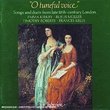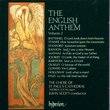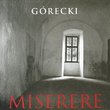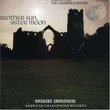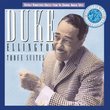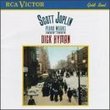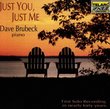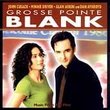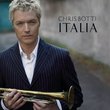| All Artists: Taverner, Christophers, The Sixteen Title: John Taverner: "Western Wynde" Mass / The Sixteen Members Wishing: 0 Total Copies: 0 Label: Hyperion UK Release Date: 11/19/1993 Album Type: Import Genre: Classical Styles: Opera & Classical Vocal, Historical Periods, Renaissance (c.1450-1600) Number of Discs: 1 SwapaCD Credits: 1 UPC: 034571165073 |
Search - Taverner, Christophers, The Sixteen :: John Taverner: "Western Wynde" Mass / The Sixteen
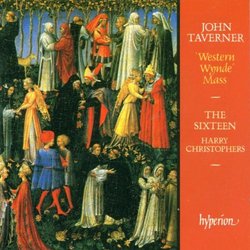 | Taverner, Christophers, The Sixteen John Taverner: "Western Wynde" Mass / The Sixteen Genre: Classical
The "Three T's" of 16th-century England were Tallis, Tye, and Taverner. Of these, Taverner was the oldest, and his music reflects the ongoing transition from the elaborate manner of late-medieval style toward the refinemen... more » |
Larger Image |
CD DetailsSynopsis
Amazon.com The "Three T's" of 16th-century England were Tallis, Tye, and Taverner. Of these, Taverner was the oldest, and his music reflects the ongoing transition from the elaborate manner of late-medieval style toward the refinements of the High Renaissance. Taverner's position as choirmaster at Cardinal College while still in his 30s testifies to his considerable reputation with both court and church. The Western Wynde mass--which gets its name from the secular tune on which it is based--is Taverner's most famous in the genre, and its popularity owes much to its melodic beauty. This disc also contains three other works, including the antiphon O splendor gloriae, in which Taverner's masterful writing for high treble truly is splendid and glorious. --David Vernier Similar CDsSimilarly Requested CDs
|
CD ReviewsBeautiful Recording for Peaceful Meditation Classicalfan | Reston, VA USA | 09/18/2005 (5 out of 5 stars) "The voices on this recording are beautiful, with an ethereal, angelic quality. There is a deep spirituality in this performance, that calls the listener to quiet contemplation. The sound quality is outstanding, giving one the impression that this performance was recorded inside a cathedral; there is a feeling of immense space surrounding the choir, and one can almost feel the voices of the choir reverberating off the high stone walls around them. Although the previous reviewer was less than satisfied with the quality of the liner notes, I actually found them to be quite informative. There is some information on the life of Taverner (little, but some, is known about his life) and each one of the selected compositions has a short essay including some musical analysis that is relatively accessible to a person with little formal education in music theory. This CD is perfect if you would like to like close your eyes and float away in peaceful reverie while listening to the pristine sound of these voices. In addition, every one of the selections on this CD has the full text written out in Latin, on the left-hand side, with a complete English translation on the right-hand side. This beautiful recording is well worth having." LITTLE ENGLANDER DAVID BRYSON | Glossop Derbyshire England | 05/18/2004 (5 out of 5 stars) "Italian polyphony of this period was strongly influenced by the Flemish school, notably through the presence of first Josquin and later Lassus in Rome. I would have liked the liner-note to tell me more, indeed to tell me anything, about what influences there may have been on the English style, or whether it was mainly an isolated phenomenon. The first item on this excellent record, and to my mind the finest, reminds me oddly of Palestrina. It is a `Jesus antiphon' O Splendor Gloriae possibly written during Taverner's time at Cardinal College Oxford, as the then-new Christ Church was originally called until the fall of its founder Cardinal Wolsey. Nothing else given here resembles Palestrina, nor for that matter Lassus or Victoria. There is a very interesting Te Deum that alternates plainchant with polyphony and that contains some startling dissonances. The other items are a short Alleluia and the mass itself. The text set differs from that normally used in omitting the kyrie and part of the credo, this being apparently English practice. There are two things here that I don't understand in the liner-note. The first is the statement that `the kyrie was not set, probably because its text would vary according to the feast or season'. The part of the mass that varies significantly according to the feast or season is the preface, which is not one of the sung parts in any setting known to me. The kyrie is about as minimalist a text as could well be imagined, and if my recollection serves the only variation is in omitting the last three `kyrie eleison's on certain occasions. The other peculiarity is that the omitted section of the credo is solemnly printed, with translation, in square brackets and with a footnote telling us it has been omitted, something the author of the leaflet had told us anyway. Why, I wonder, are we not told who is not singing, who did not compose the music and where it is not being performed?The Sixteen are a first-class ensemble whose work I had already got to know in Handel's Samson. The back of the leaflet lists seventeen of them (I counted three times) not including Harry Christophers himself. The high voices are women not boys, although there are male altos. They have quite a wide repertory extending into the 20th century, but one of their main specialisations has been early English polyphony, and I would have difficulty in imagining a better group from whom to acquire a knowledge of that particular school, although they have some formidable competition. I suppose I shall have to do my own research if I want to find out more, but the music is the main thing, and I have nothing but praise for the performances. The recording, dating from 1991, is also excellent."
|

 Track Listings (8) - Disc #1
Track Listings (8) - Disc #1

